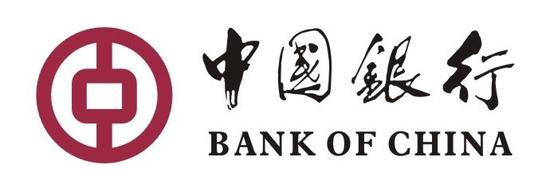Sometimes, it takes a little help to achieve the lifestyle we aspire to.
When considering a personal loan or credit line to reach that goal, it can be hard to decipher the ways interest rates are calculated.
You’re likely to see three ways banks calculate personal loans interest rates -- the flat rate method, a reducing balance method, and the rule of 78.
What is the difference, and which method works best for your needs?
The Flat Rate Method (FRM)
First is the FRM, where the same interest rate will be applied throughout your repayment period. This is typically calculated with this formula:
Interest Payable Per Instalment = (Original Loan Amount x Number Of Years x Interest Rate Per Annum) ÷ Number Of Instalments
The benefit of this process is simplicity. The interest amount will be the same throughout the repayment period, making it easy to automate monthly payments.
So for example, if you wanted to borrow $6,000 at a flat rate of 7% over 12 months, and paid monthly instalments, the calculation would look like this:
Interest Payable per Instalment = ($6,000 x 1 x 7%) ÷ (1*12) = $35 per month in interest
Total interest paid on loan over 12 months = $35 x 12 = $420
Reducing Balance Method (RBM)
The other method is the RBM. Instead of charging a fixed interest amount based on the original loan amount, this method calculates interest payments based on the outstanding principal balance. If you’re making monthly payments, this means the effective interest rate will be different every month.
The only formula you need to know what your monthly payable interest is:
Interest Payable per instalment = Effective interest rate per instalment x Outstanding loan amount
Take note that the monthly effective interest rate per month differs from the advertised interest rate. 7% interest rate is the advertised interest rate, but the effective interest rates also take into account processing fees and the changing interest rates based on the outstanding loan amount.
The table below compares the difference paid between FRM and RBM for a $6,000 loan with 7% interest rate over a 12-month tenure.
| Month (within year 1) | Principal Payment ($) | Remaining Balance ($) | Interest Payment (FRM) ($) | Interest Payment (RBM) ($) |
| 1 | 500.00 | 5500.00 | 35.00 | 35.00 |
| 2 | 500.00 | 5000.00 | 35.00 | 32.18 |
| 3 | 500.00 | 4500.00 | 35.00 | 29.33 |
| 4 | 500.00 | 4000.00 | 35.00 | 26.48 |
| 5 | 500.00 | 3500.00 | 35.00 | 23.60 |
| 6 | 500.00 | 3000.00 | 35.00 | 20.71 |
| 7 | 500.00 | 2500.00 | 35.00 | 17.71 |
| 8 | 500.00 | 2000.00 | 35.00 | 14.88 |
| 9 | 500.00 | 1500.00 | 35.00 | 11.94 |
| 10 | 500.00 | 1000.00 | 35.00 | 8.98 |
| 11 | 500.00 | 500.00 | 35.00 | 6.00 |
| 12 | 500.00 | 0.00 | 35.00 | 3.01 |
| Annual: | 6,000.00 | 420.00 | 229.93 |
*Actual interest payment and monthly repayment amount may differ due to rounding.
This method rewards users who repay a larger sum of their loan upfront. With the bulk of the interest paid within the first few months, the faster you pay off as much as you can of the loan, the lower the total amount of interest payable. Contrast this with the flat-rate approach, where your interest rate stays constant no matter what.
Choosing the reducing balance method means you pay less interest on your loan but it is not an option offered by many banks. Bank of China’s $martLoan, which borrows off the BOC MoneyPlus Line of Credit, and $martCash, which borrows off the BOC credit card, uses this reducing balance method to help customers with interest savings. Coupled with one of the lowest interest rates and tenures on the market, customers can use this loan option to suit their own needs and payment ability.
Rule of 78
Similar to the RBM, this method starts off with higher interest payments at the beginning of the tenure. But instead of taking the outstanding loan into account, the interest payments are fixed on weighted tiers, with the total adding up to the same interest amount as the FRM.
But how are the tiers determined? The clue comes from its name: 78 is the sum of each number from 1 to 12:
1+2+3+4+5+6+7+8+9+10+11+12=78
For a one-year loan, each interest payment would be weighted against this scale, starting from 12. So the first interest payment would be 12/78 of the total interest payment, the second would be 11/78 of the total interest payment, and so on.
| Month (within year 1) | Interest Payment (FRM) ($) | Weight (Ro78) | Interest Payment (Ro78) ($) | Interest Payment (RBM) |
| 1 | 35 | 12 | 64.62 | 35.00 |
| 2 | 35 | 11 | 59.23 | 32.18 |
| 3 | 35 | 10 | 53.85 | 29.33 |
| 4 | 35 | 9 | 48.46 | 26.48 |
| 5 | 35 | 8 | 43.08 | 23.60 |
| 6 | 35 | 7 | 37.69 | 20.71 |
| 7 | 35 | 6 | 32.31 | 17.81 |
| 8 | 35 | 5 | 26.92 | 14.88 |
| 9 | 35 | 4 | 21.54 | 11.94 |
| 10 | 35 | 3 | 16.15 | 8.98 |
| 11 | 35 | 2 | 10.77 | 6.00 |
| 12 | 35 | 1 | 5.38 | 3.01 |
| Annual: | 420 | 78 | 420 | 229.93 |
*Actual interest payment and monthly repayment amount may differ due to rounding.
The weight of each interest payment is adjusted according to the number of months in the tenure. For instance, the first month of a 2-year loan would be 24/300 of the total interest payment, 23/300 the next and so on.
This method is not ideal for longer tenures, and as such is only available in shorter loans like the BOC Term Loan.
Though both the Rule of 78 and RBM has reducing interest rates, it’s clear to see that the RBM still has lower total interest payments overall. The Rule of 78 would also be undesirable if you choose to cancel your loan early. In the example above, the borrower already pays double the amount of the RBM and the FRM within the first month. By the fourth month, you would have already paid more than half the total interest amount.
At the end of the day
Understanding how a personal loan is calculated can be a tricky business, so it is important to take the time to clarify those calculations with your trusted financial advisor for clarifications.
Personal loans can seem difficult to understand because of the calculations involved. But once you understand the basics, it can bring you greater savings and open doors to greater opportunities.
---
Enjoy the life you desire with BOC $martLoan that offers you a fixed monthly repayment period of up to 7 years. With just S$6 a day, you can get extra cash of S$10,000.

OR
SMS to BOCMP<space>SLWS<space>NRIC to 79777.
This article was written in collaboration with Bank of China.
Read these next:
The Great Credit Cleanup Checklist 2019
3 Best Personal Loans in Singapore with the Lowest Interest Rates
Four Types Of Personal Loans: What You Need To Know
What's The Average Personal Loan Interest Rate In Singapore?
Fast Cash Loan vs Emergency Fund: Which Is A Better Contingency Plan?
Similar articles
DBS Personal Loan Promotions Singapore (2024)
Bank of China $martLoan Review (2020)
Citibank Ready Credit vs HSBC Personal Line of Credit: Which Credit Line is Right for You?
Cashier’s Order: What Is It And How To Get One?
What Is The Effective Interest Rate (EIR) In A Loan?
Should You Pay Off Your Mortgage Early in Singapore
Why Your Car Loan Interest Is Secretly Double What It Seems
How to Calculate EMI for Personal Loans?









